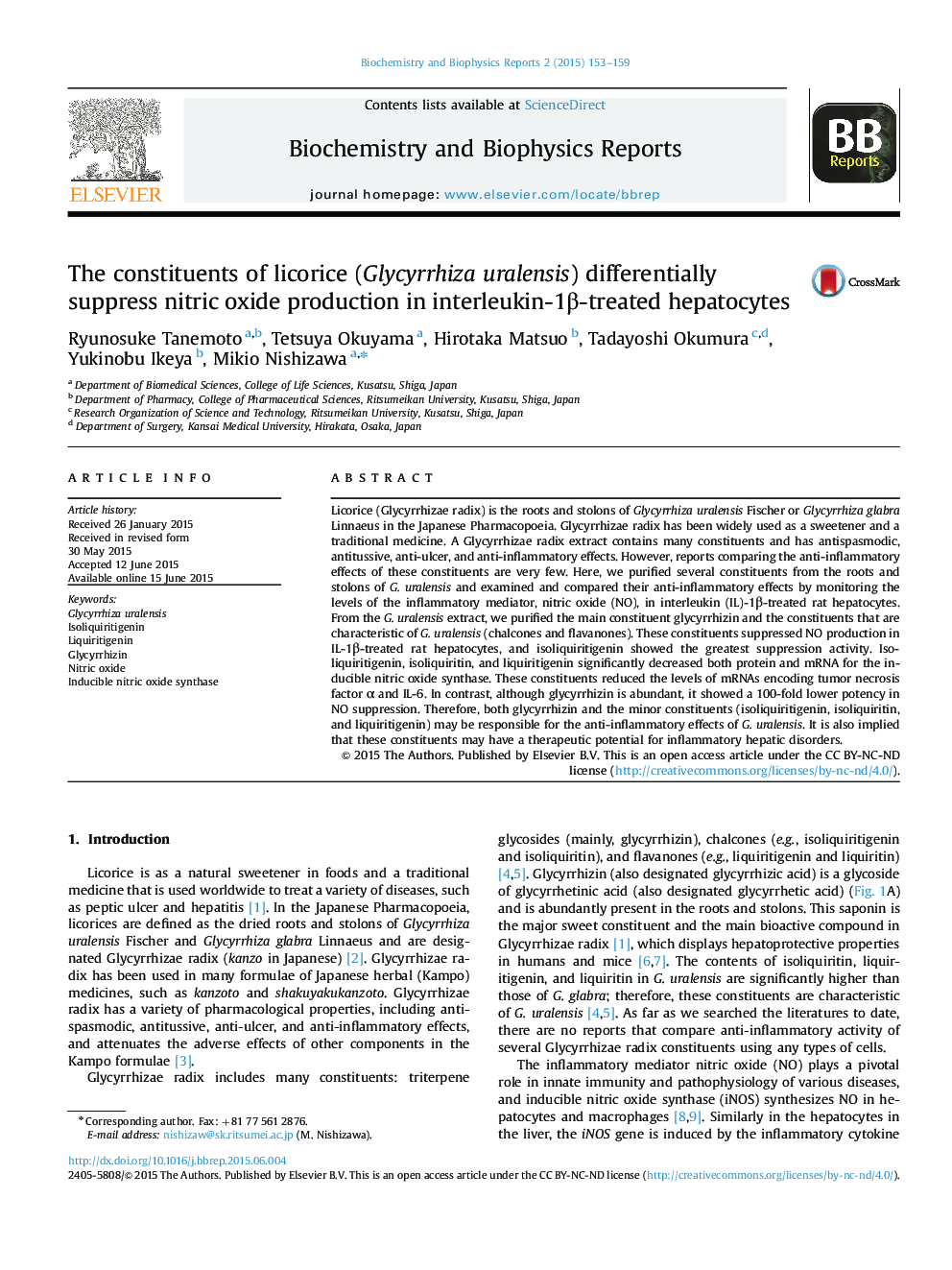| Article ID | Journal | Published Year | Pages | File Type |
|---|---|---|---|---|
| 1941885 | Biochemistry and Biophysics Reports | 2015 | 7 Pages |
•Glycyrrhizin, chalcones, and flavanones are purified from G. uralensis.•The anti-inflammatory effects of the constituents on NO release in hepatocytes are examined.•Isoliquiritigenin, a minor constituent, shows the highest NO suppression activity.•Isoliquiritigenin decreases the expression of iNOS, TNF-α, and IL-6 mRNAs.•Glycyrrhizin, a main constituent, displays very low potency in NO suppression.
Licorice (Glycyrrhizae radix) is the roots and stolons of Glycyrrhiza uralensis Fischer or Glycyrrhiza glabra Linnaeus in the Japanese Pharmacopoeia. Glycyrrhizae radix has been widely used as a sweetener and a traditional medicine. A Glycyrrhizae radix extract contains many constituents and has antispasmodic, antitussive, anti-ulcer, and anti-inflammatory effects. However, reports comparing the anti-inflammatory effects of these constituents are very few. Here, we purified several constituents from the roots and stolons of G. uralensis and examined and compared their anti-inflammatory effects by monitoring the levels of the inflammatory mediator, nitric oxide (NO), in interleukin (IL)-1β-treated rat hepatocytes. From the G. uralensis extract, we purified the main constituent glycyrrhizin and the constituents that are characteristic of G. uralensis (chalcones and flavanones). These constituents suppressed NO production in IL-1β-treated rat hepatocytes, and isoliquiritigenin showed the greatest suppression activity. Isoliquiritigenin, isoliquiritin, and liquiritigenin significantly decreased both protein and mRNA for the inducible nitric oxide synthase. These constituents reduced the levels of mRNAs encoding tumor necrosis factor α and IL-6. In contrast, although glycyrrhizin is abundant, it showed a 100-fold lower potency in NO suppression. Therefore, both glycyrrhizin and the minor constituents (isoliquiritigenin, isoliquiritin, and liquiritigenin) may be responsible for the anti-inflammatory effects of G. uralensis. It is also implied that these constituents may have a therapeutic potential for inflammatory hepatic disorders.
Graphical AbstractFigure optionsDownload full-size imageDownload as PowerPoint slide
